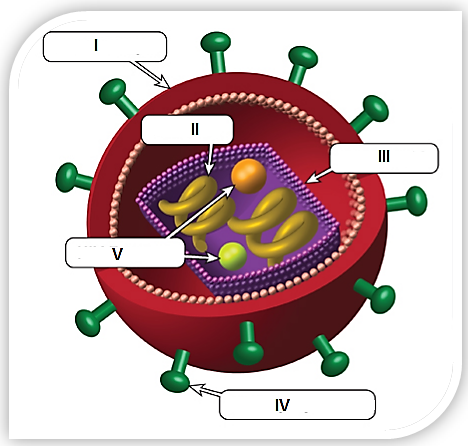12th Grade > Biology
HUMAN HEALTH AND DISEASE MCQs
Total Questions : 38
| Page 4 of 4 pages
Answer: Option A. -> Fibroblasts
:
A
Sarcoma is a cancer of the connective tissue or non-epithelial tissues. Fibroblasts are cells in the connective tissues, and produce collagen and other fibres.
:
A
Sarcoma is a cancer of the connective tissue or non-epithelial tissues. Fibroblasts are cells in the connective tissues, and produce collagen and other fibres.
Answer: Option B. -> Artificially acquired passive immunity
:
B
Passive immunity can be induced artificially when preformed antibodies are given as medication to non-immune individuals. Passive immunization is quick acting and can provide an immune response within hours, faster than a typical vaccine. In case of snakebites, the antivenom administered to the patient contains preformed antibodies against the snake venom. So, treatment of snakebite with antisnake venom is artificially acquired passive immunity.
:
B
Passive immunity can be induced artificially when preformed antibodies are given as medication to non-immune individuals. Passive immunization is quick acting and can provide an immune response within hours, faster than a typical vaccine. In case of snakebites, the antivenom administered to the patient contains preformed antibodies against the snake venom. So, treatment of snakebite with antisnake venom is artificially acquired passive immunity.
Answer: Option A. -> True
:
A
MHC is a cluster of proteins that are displayed by all the cells in the body. Cellular proteins are continuously degraded and presented along with MHC on the cell surface for self and non-self recognition.
:
A
MHC is a cluster of proteins that are displayed by all the cells in the body. Cellular proteins are continuously degraded and presented along with MHC on the cell surface for self and non-self recognition.
Answer: Option B. -> A - 3, B - 5, C - 1, D - 2, E - 4
:
B
Bacteria like Streptococcus pneumoniae and Haemophlius influenzae are responsible for the disease pneumonia. Entamoeba histolytica is a protozoan parasite in the large intestine of humans which causes amoebiasis. Plasmodium falciparum causes malignant malaria. Wuchereria bancrofti causes filariasis or elephantiasis. Salmonella typhi is a pathogenic bacterium, which causes typhoid fever in humans.
:
B
Bacteria like Streptococcus pneumoniae and Haemophlius influenzae are responsible for the disease pneumonia. Entamoeba histolytica is a protozoan parasite in the large intestine of humans which causes amoebiasis. Plasmodium falciparum causes malignant malaria. Wuchereria bancrofti causes filariasis or elephantiasis. Salmonella typhi is a pathogenic bacterium, which causes typhoid fever in humans.
Answer: Option A. -> I - HIV envelope, II - RNA, III - Capsid, IV - Surface protein, V - Viral enzymes
:
A
Human immunodeficiency virus or HIV is a member of a group of viruses called retrovirus, which have a sphericalouter surface called envelope. On the surface of the envelope contains spike-like glycoproteins called surface proteins. Inside the envelope is a bullet-shaped core called capsid. Capsid along with theHIV genetic material (RNA) also houses different enzymes that carry steps outin the HIV life cycle.
:
A
Human immunodeficiency virus or HIV is a member of a group of viruses called retrovirus, which have a sphericalouter surface called envelope. On the surface of the envelope contains spike-like glycoproteins called surface proteins. Inside the envelope is a bullet-shaped core called capsid. Capsid along with theHIV genetic material (RNA) also houses different enzymes that carry steps outin the HIV life cycle.
Answer: Option A. -> Passive immunity
:
A
In case of passive immunity, antibodies generated in one person are transferred to another individual, making the recipient immune to a disease he has never encountered. Transfer of antibodies that occurs from mother to foetus via the placenta is an example of natural passive immunity.Mother’s milk contains colostrum, a yellowish secretion, that contains antibodies against pathogens that the mother has been exposed to. Since these are transferred to the baby, this kind of immunity is termed as ‘passive immunity’.
:
A
In case of passive immunity, antibodies generated in one person are transferred to another individual, making the recipient immune to a disease he has never encountered. Transfer of antibodies that occurs from mother to foetus via the placenta is an example of natural passive immunity.Mother’s milk contains colostrum, a yellowish secretion, that contains antibodies against pathogens that the mother has been exposed to. Since these are transferred to the baby, this kind of immunity is termed as ‘passive immunity’.
Answer: Option C. -> Vincristine
:
C
Vincristine is an anti-cancer drug obtained from the plant Catharanthus roseus. It is used for treating a number of different types of cancers like acute myeloid leukemia, Hodgkin's disease, etc.
:
C
Vincristine is an anti-cancer drug obtained from the plant Catharanthus roseus. It is used for treating a number of different types of cancers like acute myeloid leukemia, Hodgkin's disease, etc.
Answer: Option A. -> Autoimmune disorder
:
A
Type 1 diabetes mellitus is a chronic medical condition that occurs when the pancreas, an organ in the abdomen, produces very little or no insulin. Type 1 diabetes usually develops when the immune system destroys the insulin-producing cells (called the beta cells) in the pancreas. This is called an autoimmune response. Type 2 diabetes mellitus is caused mainly by genetic factors and due to certain kinds of lifestyle. AIDS or acquired immunodeficiency syndrome is a sexually transmitted disease caused by the human immunodeficiency virus. Multiple myeloma is a cancer of plasma cells.
:
A
Type 1 diabetes mellitus is a chronic medical condition that occurs when the pancreas, an organ in the abdomen, produces very little or no insulin. Type 1 diabetes usually develops when the immune system destroys the insulin-producing cells (called the beta cells) in the pancreas. This is called an autoimmune response. Type 2 diabetes mellitus is caused mainly by genetic factors and due to certain kinds of lifestyle. AIDS or acquired immunodeficiency syndrome is a sexually transmitted disease caused by the human immunodeficiency virus. Multiple myeloma is a cancer of plasma cells.

















